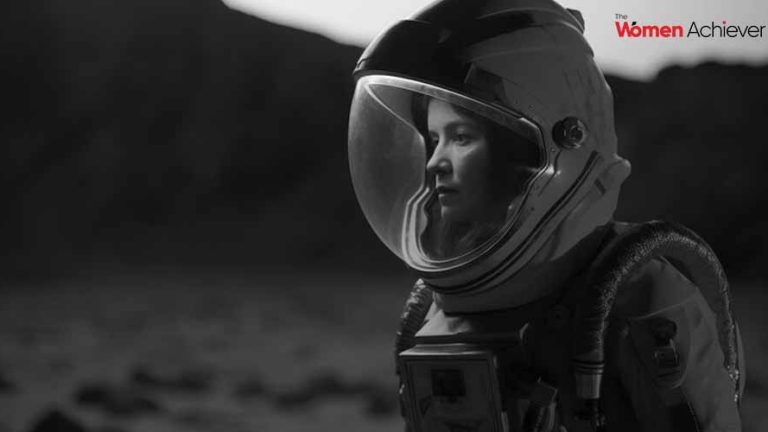Explore their contributions to space exploration and future missions to the Moon and Mars
The journey of women in space exploration has been one of resilience, perseverance, and groundbreaking achievements. From the early days of spaceflight to current missions and future aspirations, women have played a crucial role in advancing human understanding of the cosmos. Despite facing numerous barriers, they have continually pushed the boundaries of science, engineering, and space travel.
Pioneering Women in Space Exploration
Early Contributions and Barriers
Women have contributed to space science long before they were allowed to travel beyond Earth’s atmosphere. In the early 20th century, female mathematicians and scientists played a critical role in astronomy and physics. However, societal norms and institutional barriers largely excluded them from astronaut programs and engineering roles in space agencies.
One of the most notable figures was Katherine Johnson, a mathematician at NASA whose calculations helped launch the first American astronaut into orbit. Her work, along with that of Dorothy Vaughan and Mary Jackson, was crucial to the success of the Mercury and Apollo missions. These women, often working behind the scenes, demonstrated that gender did not determine one’s ability to contribute to space exploration.
The First Women in Space
The Soviet Union led the way in breaking gender barriers in space travel. In 1963, Valentina Tereshkova became the first woman to travel to space aboard Vostok 6. A former textile worker and parachutist, Tereshkova orbited Earth 48 times, proving that women could endure the rigors of spaceflight.
Despite this historic achievement, it took another 19 years before another woman entered space. In 1982, Svetlana Savitskaya became the second woman in space, also from the Soviet Union. She made history again in 1984 when she became the first woman to perform a spacewalk, proving that women could handle extravehicular activities just as effectively as men.
Breaking Barriers in the United States
NASA’s first female astronaut, Sally Ride, made history in 1983 when she flew aboard Challenger on the STS-7 mission. Ride’s participation marked a turning point for American women in space exploration, proving that they could serve as astronauts alongside men.
In 1992, Mae Jemison became the first Black woman in space when she flew aboard Endeavour on the STS-47 mission. A physician, engineer, and former Peace Corps member, Jemison’s achievements highlighted the importance of diversity in space programs.
Other notable early astronauts include Eileen Collins, the first female Space Shuttle pilot and commander, and Peggy Whitson, who became the first woman to command the International Space Station (ISS) and holds the U.S. record for most time spent in space.
Women in Space Exploration Today
Expanding Roles in Space Agencies
Women today hold leadership roles at NASA, the European Space Agency (ESA), Roscosmos, and other international space programs. They work as astronauts, engineers, mission controllers, and researchers contributing to both crewed and robotic space missions.
In 2019, Christina Koch and Jessica Meir made history by conducting the first all-female spacewalk outside the ISS. Their mission was a significant milestone in gender equality in space exploration, demonstrating that women can lead complex space operations.
Private Sector Contributions
With the rise of private space companies such as SpaceX, Blue Origin, and Virgin Galactic, women are increasingly involved in commercial spaceflight. Gwynne Shotwell, the President and COO of SpaceX, has played a crucial role in the company’s success, overseeing missions to the ISS and beyond.
Private space tourism is also opening doors for more women to experience space travel. In 2021, Wally Funk, an aviation pioneer who trained as part of NASA’s Mercury 13 program in the 1960s but was denied the chance to fly, finally made it to space aboard Blue Origin’s New Shepard suborbital vehicle.
Scientific Contributions and Mars Exploration
Women are leading critical research in planetary science, astrophysics, and engineering. Swati Mohan, an Indian-American aerospace engineer, was instrumental in NASA’s Perseverance rover landing on Mars in 2021. Her guidance and expertise helped ensure a safe touchdown, marking a new era in Mars exploration.
NASA’s Artemis program, which aims to return humans to the Moon by the mid-2020s, is set to include the first woman to walk on the lunar surface. This historic milestone will pave the way for future crewed Mars missions and further gender equality in space exploration.
The Future of Women in Space
The First Woman on the Moon and Mars
NASA has confirmed that the Artemis III mission will send the first woman to the Moon. This mission, part of the broader Artemis program, will establish a sustainable human presence on the lunar surface, serving as a stepping stone for future Mars missions.
Beyond the Moon, space agencies are actively preparing for crewed missions to Mars in the 2030s and 2040s. Women are expected to play key roles in these missions, both as astronauts and mission planners. The challenges of long-duration space travel, such as radiation exposure, bone density loss, and psychological strain, are being extensively studied, and women will be integral in these explorations.
Increased Representation and Diversity
Efforts to increase gender diversity in STEM (Science, Technology, Engineering, and Mathematics) fields are essential for the continued success of space programs. More initiatives are encouraging young women to pursue careers in space science and engineering. Programs such as NASA’s Girls in STEM, the European Space Agency’s outreach initiatives, and nonprofit organizations like the Brooke Owens Fellowship are inspiring the next generation of female space explorers.
The Role of Artificial Intelligence and Robotics
Women are also leading advancements in AI and robotics, which play a crucial role in space missions. As missions become more reliant on autonomous systems and AI-driven research, female scientists and engineers are at the forefront of designing and programming these technologies.
The Emergence of Space Habitats
The future of space exploration includes plans for permanent space habitats, such as lunar bases, Mars colonies, and orbital research stations. Women will contribute significantly to the development of these structures, ensuring sustainable human habitation beyond Earth.
Women have been vital contributors to space exploration, from the early pioneers who broke barriers to today’s leaders shaping the future of interplanetary travel. The increasing inclusion of women in astronaut programs, leadership positions, and scientific research is transforming space exploration into a more diverse and inclusive endeavor.
With the upcoming Artemis missions, advancements in Mars exploration, and continued innovation in space technology, women will play a central role in humanity’s next great leap into the cosmos. The future of space exploration is not only about reaching new frontiers but also about ensuring that everyone, regardless of gender, has the opportunity to explore and contribute to the universe’s vast mysteries.






Add comment